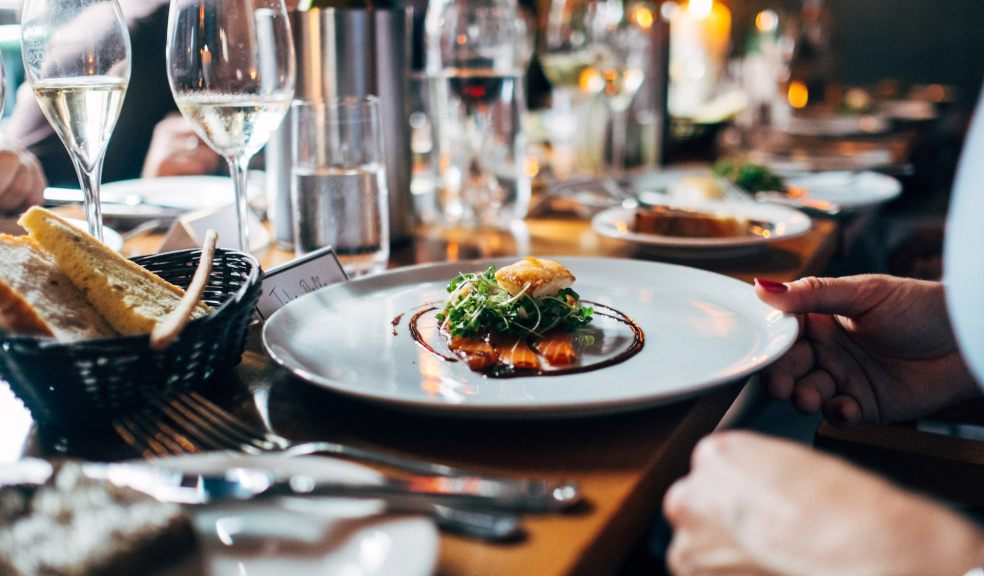
How Omnichannel Communications Can Serve Restaurant Customers’ Changing Needs
In the ever-evolving business communications landscape, the term “omnichannel communications” has undergone its own evolution. Several years ago, forward-thinking retail stores premiered innovative ways of communicating with in-store customers. Digital signage and magic mirrors are two of the better-known omnichannel communications media.
Today, multiple industries have adapted omnichannel communications to their respective needs. In particular, the telecommunications industry has stepped up, embracing a unified customer experience delivered via multiple communications channels.
More recently, the United States restaurant industry has adopted its own omnichannel communications framework. Not surprisingly, the COVID-19 pandemic played an integral role in this key development. In fact, the pandemic completely reordered the dining landscape.
How the Restaurant Industry Has Changed
Historically, United States restaurant patrons had limited dining options available. They visited a sit-down restaurant and enjoyed a prepared-to-order meal with table service. Other hungry customers might pick up carry-out food and dine at home. Placing an online food order might (or might not) be an option at any type of restaurant.
COVID-19 Brings a Restaurant Industry Transformation
In March 2020, the COVID-19 pandemic began to aggressively spread across the globe. Countless businesses (including restaurants) were forced to close their doors. Over time, some eateries reopened, barring patrons from dining indoors but offering take-out food.
Customers typically ordered (and paid) online, using the curbside pickup option to retrieve their meals. Unbeknownst to them, they were the vanguard of an ongoing restaurant transformation.
Fast forward to today, and restaurants are back to business as usual. However, many of these eateries now offer new ways to order and receive a tasty meal. This system provides the restaurant with additional revenue streams. On the customer side, diners want a seamless ordering process that continues the smooth customer experiences they enjoyed during the pandemic.
Although phone-based orders continue, many customers now prefer to order via SMS/text messaging or the restaurant’s app. Other customers place their orders at the in-store kiosk. Regardless of the ordering method, the customer demands the same pleasant, efficient experience.
The Foundation of Restaurant Omnichannel Communications
The aforementioned communication media form the foundation of a restaurant’s omnichannel communications. For perspective, the same technology that powers a telecommunications firm’s customer experiences has now migrated to the restaurant industry.
Now, restaurant customers can reserve a table, and browse the menu, on the eatery’s website. Alternatively, the customer can order via a QR code or at an in-restaurant kiosk. If they choose home or workplace delivery, they can track the delivery order’s progress online.
A robust point-of-sale (or POS) system can easily handle these order-related functions. By integrating multiple channels with the POS system, the restaurant owner can bring all restaurant-related functions under a single umbrella.
Another View of Restaurant Omnichannel Communications
Naturally, digital customer experiences go beyond convenient online food orders. Let’s say a customer has a substandard dining experience, and they wish to file a complaint with the restaurant’s home office. The customer may contact the customer support team via phone, SMS/text messaging, chat bot, or chat app.
The customer speaks to an agent, who promises to investigate and contact the customer with a solution. The agent asks the customer for their preferred communication channel. This demonstrates respect for the customer and shows that the restaurant values their business.
When the issue is resolved, a different agent is on duty. They have accessed the details of the previous conversation, so the customer doesn’t have to waste time repeating them. This agent contacts the customer and delivers a solution to their problem. If the customer contacts the service team again, the current conversation’s details will be available for review.
Mitto Brings a Decade of Omnichannel Experience to the Table
With many restaurants (and other businesses) relatively new to the omnichannel arena, companies are receptive to hearing guidance from an industry expert. Swiss omnichannel solutions provider Mitto certainly qualifies, as the company entered the emerging omnichannel industry in 2013.
Over the past decade, omnichannel technology advanced by leaps and bounds. In turn, Mitto developed increasingly sophisticated communications solutions. Today, the company facilitates ”win-win” brand interactions over each customer’s preferred channel(s).
Ilja Gorelik, Mitto’s Chief Operating officer, emphasizes that the company’s mission has greatly expanded over the past decade. “At Mitto, we’re on a mission to deliver reliable, high-quality communications between businesses and their customers, every time.
“Our company was founded in 2013 with the specific aim of building a state-of-the-art Application-to-Person (A2P) SMS messaging platform, unrivaled in reliability, that could support the requirements of a new wave of A2P services.”
Mitto Responded to Increased Demand
Growing demand for additional communications platforms spurred Mitto to expand its offerings. Ilja Gorelik details the company’s development of additional message channels.
“As the demand grew for enablement of omnichannel communications capabilities, we expanded our portfolio beyond SMS to now include voice, chat bots, all major chat apps (WhatsApp, Viber, Facebook Messenger, etc.), Google Business Messaging, RCS, myriad CRM and marketing platform integrations and, most recently, pre-built tools for bulk campaigns and conversational support chats…Simply put, we make communication happen.
“There is no single channel to reach every customer, there is no perfect message, and customers’ expectations for brands are sky high. Mitto’s services help brands navigate this complexity,” Ilja Gorelik concluded.
The Importance of One Consistent Voice
Speaking on each customer’s preferred channel is important. First, this reinforces the company’s respect for the customer’s preferences. Second, that’s where the message will likely reach the customer.
Ilja Gorelik explained why brands must send the same message on every channel. “Brands need to speak to customers wherever they are ─ be it SMS, Chat Apps or other ─ with a single consistent voice. Otherwise, they risk losing them and their revenue. Drawing multiple digital channels seamlessly together will become a foundational element to unify customers’ touch points across all channels.
“Through its global partnerships with mobile network operators and its advanced routing capabilities, Mitto gives brands the flexibility to meet customers wherever they are with the speed and agility they require today,” Ilja Gorelik remarked.
Brinker International’s Omnichannel Framework Enables Virtual Restaurant Growth
The Spring 2020 onset of the COVID-19 pandemic put many restaurants in survival mode. Those eateries that managed to stay in operation revised their business models in 2021. For perspective, almost one-fifth of restaurant chains showed an Average Unit Volume increase in 2021. This occurred despite slowing (or decreasing) in-store sales.
To accomplish this sales growth, many restaurants invested in digital technology. Simply put, opening more communication and food service channels enabled each restaurant to reach more customers. Examples of channels included in-store dining, drive-though sales, curbside pickup, or home delivery.
Brinker International, Inc. is the parent company of It’s Just Wings, a widely popular virtual restaurant. In 2021, omnichannel-driven, off-premises sales enabled Brinker International to expand the restaurant’s operation and add Maggiano’s Italian Classics, a second virtual brand. Today, both restaurants handle a substantial volume of off-premises customer orders.
Wade Allen, Brinker’s senior vice president and head of innovation, emphasized that restaurants must meet customers’ needs for convenience and taste. “We have become used to what I sometimes call the ‘Amazon effect’ of being able to order something and get it immediately.
“And why can't every company do that? I think that what our guests now seek is convenience: something fast and easy, but it also has to be delicious and not typical QSR. So, whether it’s in the dining room or at home, you have to deliver a great product at a great value,” Wade Allen remarked.
True Food Kitchen Prioritizes Respect for Customers’ Communication Preferences
A classic dine-in restaurant has begun to focus on providing hospitality to guests who order via other channels. Christine Barone, True Food Kitchen Chief Executive Officer, said the 39-unit chain wants to provide an omnichannel experience regardless of how guests order their food.
“What we need to do as operators is provide an experience for our guests that can span across all of those expectations…You can now come into our restaurants and actually order at your table with your phone, or you can decide completely to ignore that and order with the menu, order through a server.
“So I think right now it’s about meeting the guests where they are. And even the same guest on different occasions might want something pretty different,” Christine Barone explained.
As True Food Kitchen continues to expand, Christine Barone noted that the chain is rethinking each restaurant’s format. With that said, she continues to focus on the brand’s healthy food mission.
Christine Barone also believes her team can take the changes in stride. “We’ve all been through so much in the last two years, we’re strong. We know we can conquer anything at this point, and I see this strength across my team,” she said.
The Omnichannel Restaurant Experience: The Wave of the Future
As restaurant customers keep adopting new preferred channels, forward-thinking eateries must honor these choices. By inviting orders on channels customers already use, the restaurant takes a bold step in building long-term customer relationships.












